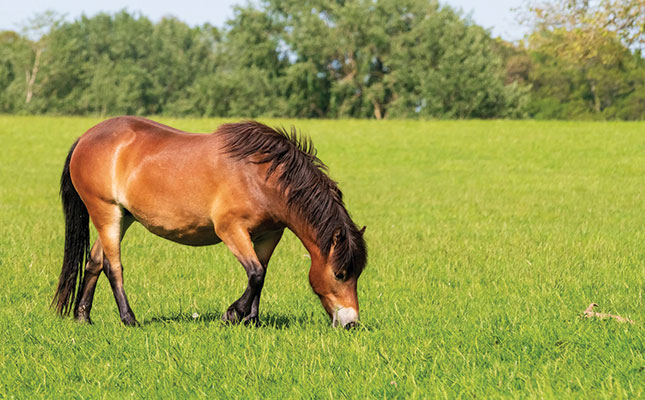
Photo: Pixabay
Taditionally, veterinarians check a horse for colic by listening to the rumbling of its digestive organs. Today, with the substantial increase in the petrol price and safety concerns linked to night calls, it’s difficult to get a vet to visit a sick horse after hours.
It would therefore help you as a horse owner to learn this technique. All you need is a stethoscope and a practical understanding of the horse’s digestive system.
From beginning to end
The digestive system of a horse starts at its mouth and continues down the oesophagus (gullet) into the stomach, which is located on the left side of the abdomen just behind the diaphragm.
The stomach is attached to the small intestine, which loops several times before entering the large intestine at the ileocaecal valve. The large intestine is made up of the caecum (a sac at the start of the large intestine) and the colon.
In horses, these organs are very large, as they work in the same way as the rumen in a cow, using microflora and regular muscular contractions to digest fibrous grasses. The large colon folds over on itself, and this can lead to blockages and cause colic. It leads into the small colon, rectum and anus.
As food and water are moved along the digestive system, they make regular sloshing and rumbling sounds known as borborygmi. You can hear these sounds clearly by using a stethoscope and also sometimes feel them by placing your hand gently against the abdomen.
In general, when you listen to a normal intestinal system, you’ll hear one to three gut sounds per minute. If they occur more often than three per minute, the gut is ‘hypermobile’; in other words, it is moving too much. If you hear less than one gut sound per minute, there’s not enough movement, which could mean a blockage, leading to colic.
Checking the sounds
There is a handy formula for examining borborygmi in horses. The abdomen is divided into quadrants: two on the left side and two on the right. Listen to each of these for at least one to two minutes.
The upper left quadrant lies over the pelvic flexure (bend) of the large intestine and small colon. You will also sometimes hear sounds from the stomach and small intestine. This quadrant can be quieter than others because it typically contains less fluid and gas.
The upper right quadrant overlies the base of the caecum, while the lower right quadrant overlies the body of the caecum. The lower left quadrant overlies the left upper and lower colon.
You should hear constant borborygmi in all three of these quadrants, due to the substantial quantities of gas and liquid moving through the large digestive organs during digestion. The noises should be consistent and of a greater intensity than those heard in the upper left quadrant.
When your veterinarian visits your stables for a routine check-up or vaccination, ask for some instruction and demonstration on how to use a stethoscope to listen to these signs.
The vet should also make sure you are listening to the correct sounds in each quadrant, and understand how a normal gut sounds. Most vets will be happy to help, as it means you can examine your own horse in an emergency. You could then contact your vet by cell phone, if required, to describe where the problem lies.
The veterinary practice may even be able to sell you a good stethoscope!
Dr Mac is an academic, a practising equine veterinarian and a stud owner.










